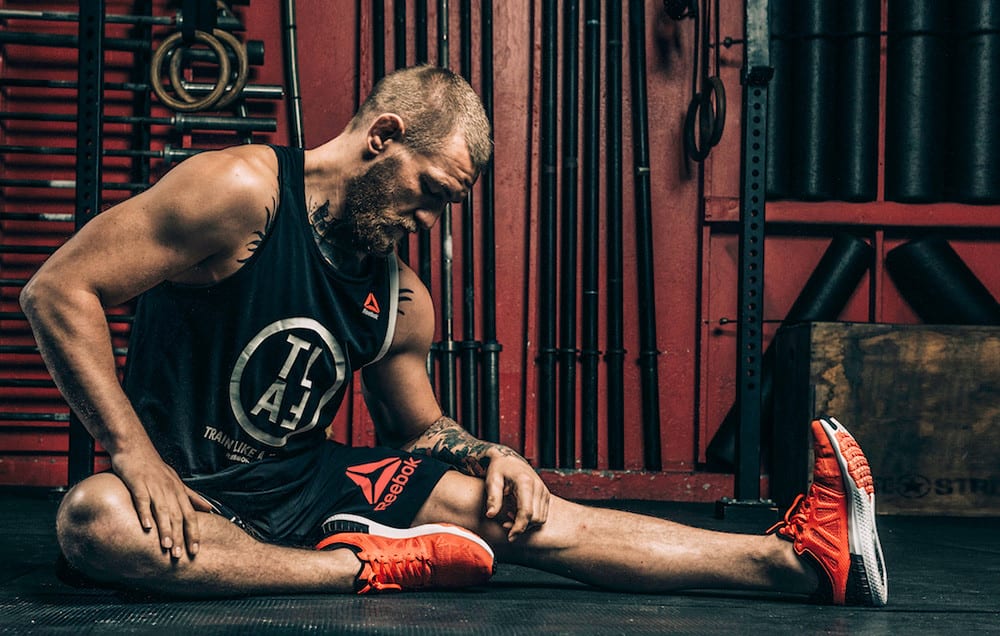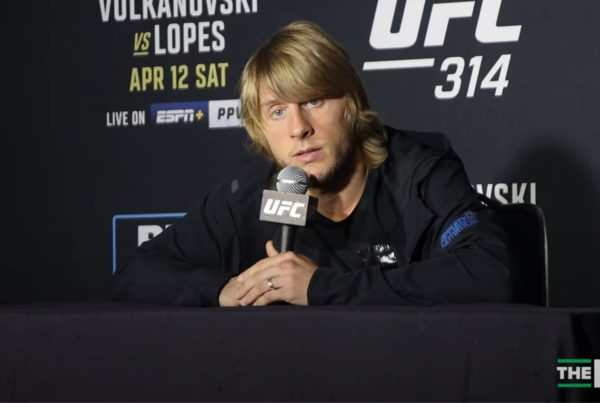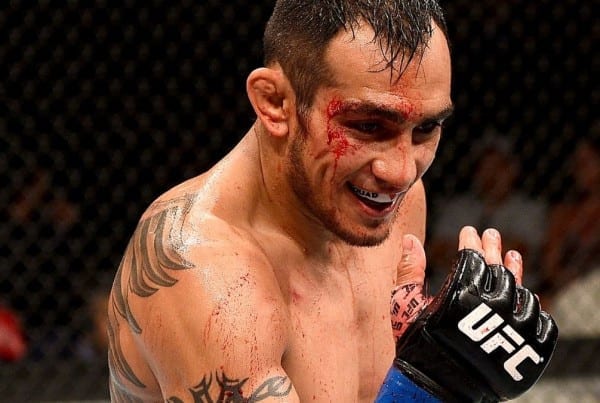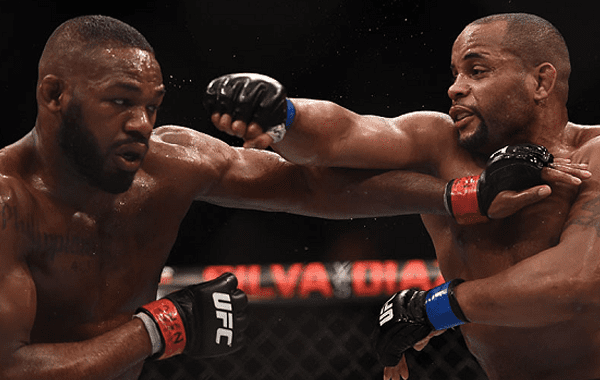“When somebody is watching a fight there’s the punches, the kicks, the takedowns, the grappling… but what people are less aware of is for a fighter to be in a correct position to execute a strike effectively, they need to have mastery of the movement of their position… of their balance… I think that’s really what separates the elite fighters from somebody who’s ‘good enough‘.”
UFC Welterweight Carlos Condit speaking as part of an official promo video for MovNat, a physical education and fitness system that is entirely based on natural movement skills. Hailing from Albuquerque, New Mexico, The Natural Born Killer is a strong advocate of movement training, crediting it with a successful rehabilitation following the tear of his ACL against current welterweight champion Tyron Woodley at UFC 171.
Founder and innovator of MovNat, French – American Erwan Le Corre, spoke to MMA Latest about the role that ‘natural movement’ has to play in the octagon.
“There is a whole spectrum of movement patterns that take place in between the striking, wrestling or submission attempts,” he states. “The more competent (you are) in a wide range of natural movements, the better the transitions in terms of speed, range, accuracy and timing. I like to say that those movements are like the ‘glue’ that chains specific fighting techniques together…”
“For example, if a fighter lacks mobility and stability in the lower body, his lower body mechanics are inefficient. If he can’t deep squat or kneel comfortably, or get up and down fast then all transitions from stand up to ground or the other way around during a fight will be slow and sloppy. Movement training ensures that the fighter is very comfortable and competent with anyc of those fundamental movement patterns.”
On episode #749 of The Joe Rogan Experience podcast, Condit and Le Corre gave further insight on their work together and the part that movement training played in Condit’s win against Thiago Alves at UFC Fight Night 67.
“We worked on instead of being really heavy on my front leg, having more of an upright stance as far as my torso, and being more 50/50 on my legs,” Condit explained. “That allowed me to move in and out faster. Not only forward but back. That showed big time in the fight against Thiago Alves – that was the reason I was able to get inside and land with the elbows as effectively as I did.”
Having adopted a traditional square footed Muay Thai stance for most of his fighting career, it came as no surprise that Condit has often struggled with the change.
“I’ve been training Muay Thai since I was fifteen years old so these things have been stratified in my freakin’ muscle memory for years,” he told host Joe Rogan. “You still see me going back to my old habits especially when you’re tired or stressed you’re going to revert back to the thing you’ve trained the most, but when I’m mindful of it for the most part I definitely think that the adjustments we made were major improvements.”
Addressing the prevalent view that MovNat advocates a modality of training for fighters that requires little effort (and therefore can’t be of much benefit), Le Corre touched on the extensive mental effort that is involved in the discipline.
“The number one reason why we have a brain from an evolutionary perspective is for movement, so that an animal can navigate through complex movements through complex environments. Intensity is not necessarily raising the heart rate and burning all over. Intensity can be in the mindfulness that you apply to intentionally performing movement specifically with a high level of efficiency.”
Another MMA fighter who has placed much import on how he moves in the octagon is of course Conor McGregor.
“I’ve always been fascinated by movement, and I’ve always looked at people who can move in unusual ways,” McGregor stated following his first round knockout of Jose Aldo at UFC 194. “I don’t just see them as people who have control of their bodies and control of their frame, but control of their mind.”
Availing of Israeli movement coach Ido Portal’s expertise for a number of his training camps, McGregor says his work with Portal “re-centers the mind.”
“Movement is everywhere,” Portal informed Ariel Helwani in the run up to McGregor’s bout against Mayweather. “It’s about the distance, it’s about the foot patterns, it’s about the position, the posture of the body… it’s about how to use your hands how to use the shoulders how to use the eyes… where to look how to look. How to loosen up the arms so the shots can really fly, how to disconnect the shoulder in the right moment and reconnect them in another moment.”
Two-time Welterweight Champion Georges St-Pierre is of a similar mindset to the aforementioned fighters. In his bestselling book ‘The Way Of The Fight’, GSP devotes an entire chapter to stand up.
“Did you know that our toes and feet can keep our balance better than anything else? They keep us centred. Every single movement we make starts with our feet. Feet are the genesis of all movements, especially in mixed martial arts. It’s where most of our power comes from.”
A few pages on, St-Pierre opens up about his loss in 2007 to Matt Serra, citing his lack of balance as the cause.
“One thing that really stood out for me was that after he had surprised me, I lost my equilibrium. My balance was off… I rushed into counterattacks. I paid for my lack of understanding, my lack of balance.”
Following two surgically repaired knees, GSP has turned to gymnastics in order to address such issues with balance, flexibility and core strength. So, is movement training the future of the sport? Former bantamweight Champion Dominick Cruz seems to think so.
“You can make easier reads on a traditional style than somebody that’s moving in all different directions and switching from southpaw to conventional, throwing spin kicks. That’s the future of the sport. Movement, fluidity, having movements in every single position. There is no wrong or right style in this sport – that’s what’s beautiful about mixed martial arts.”




